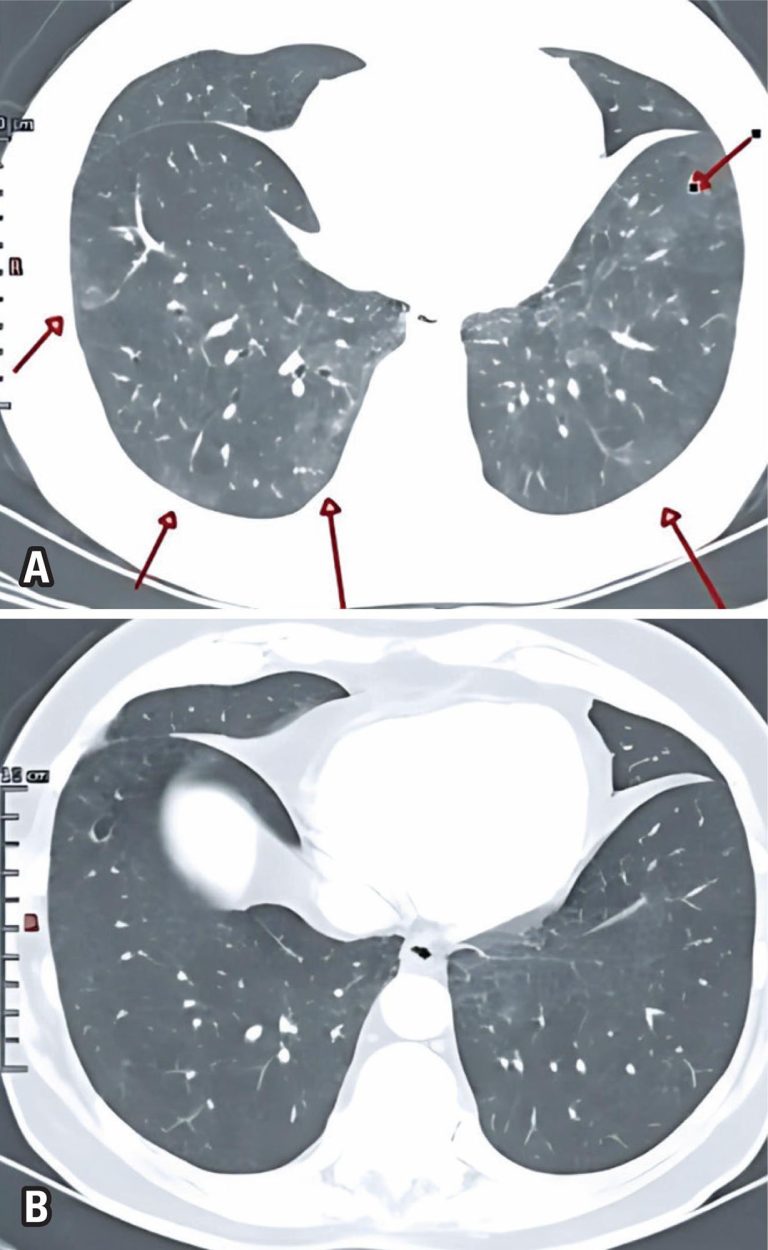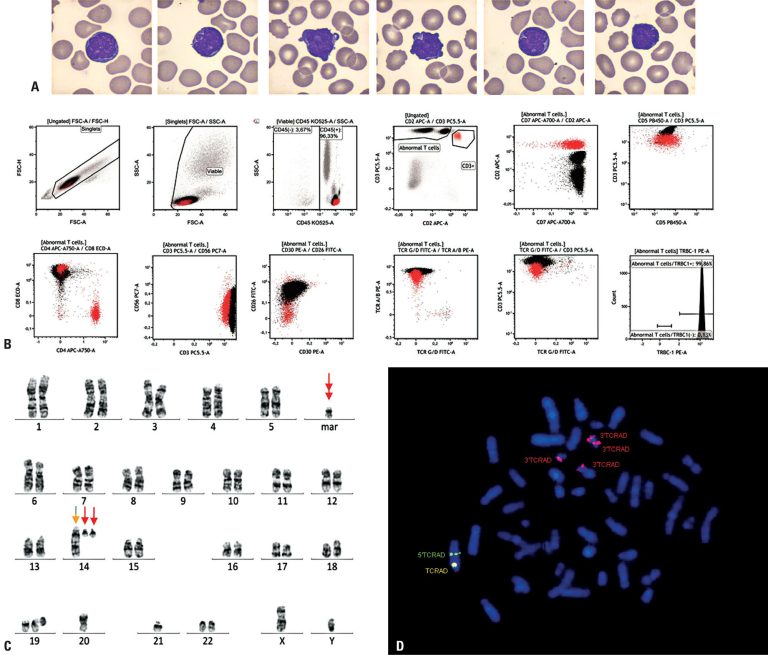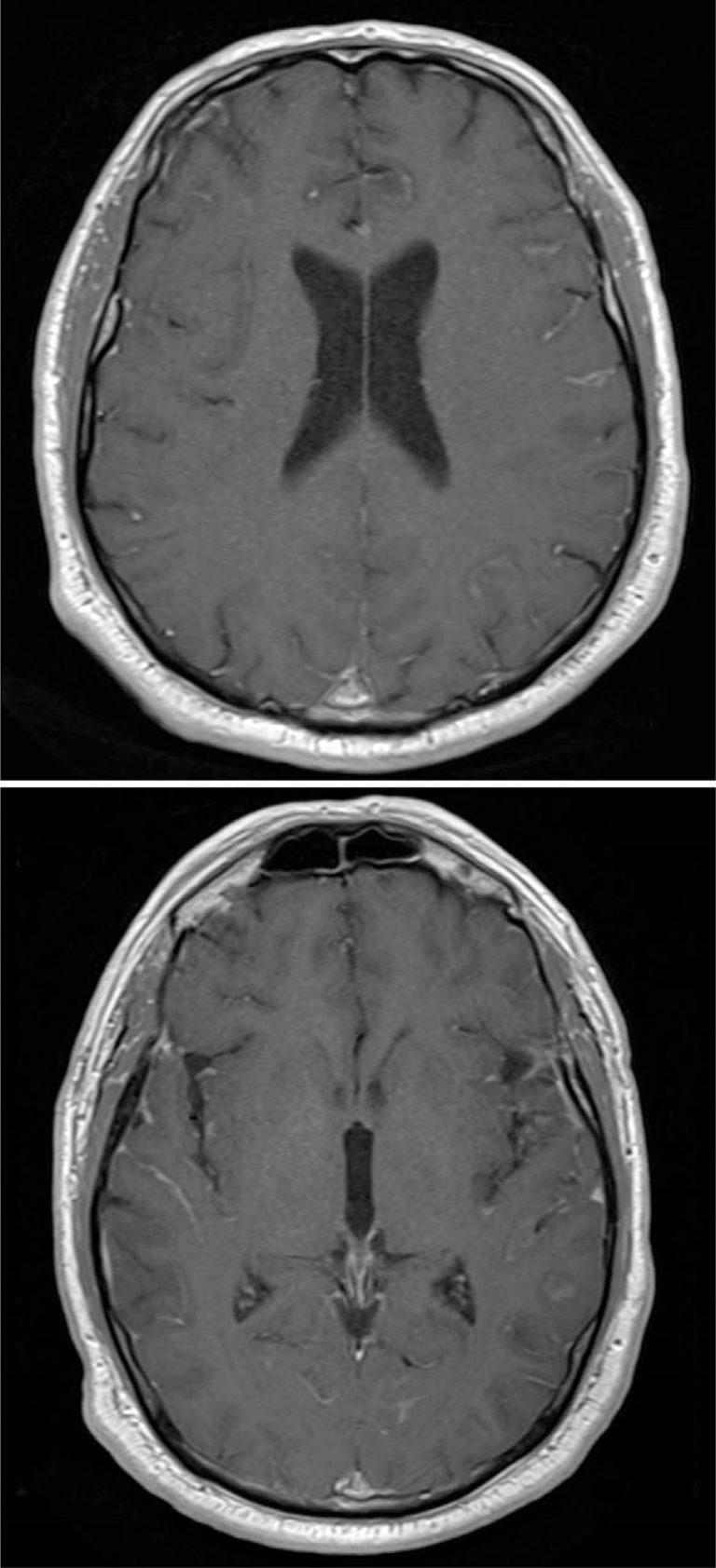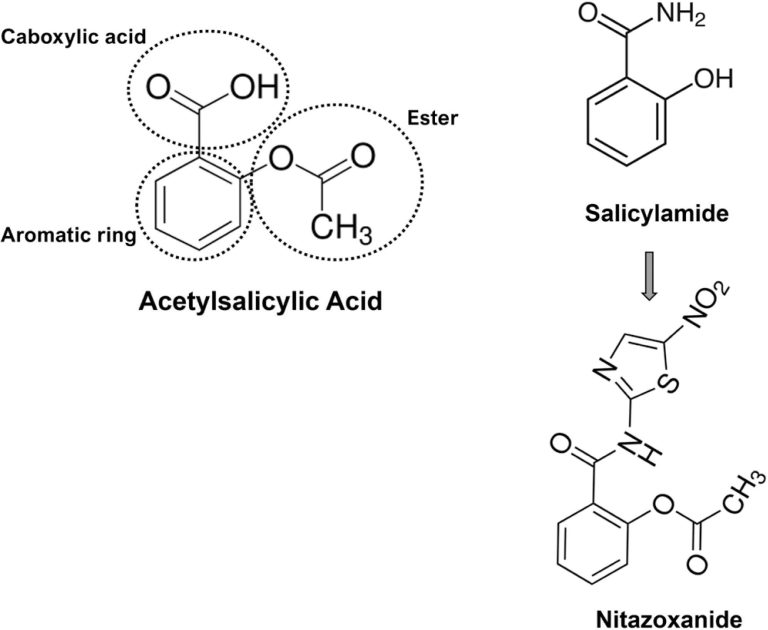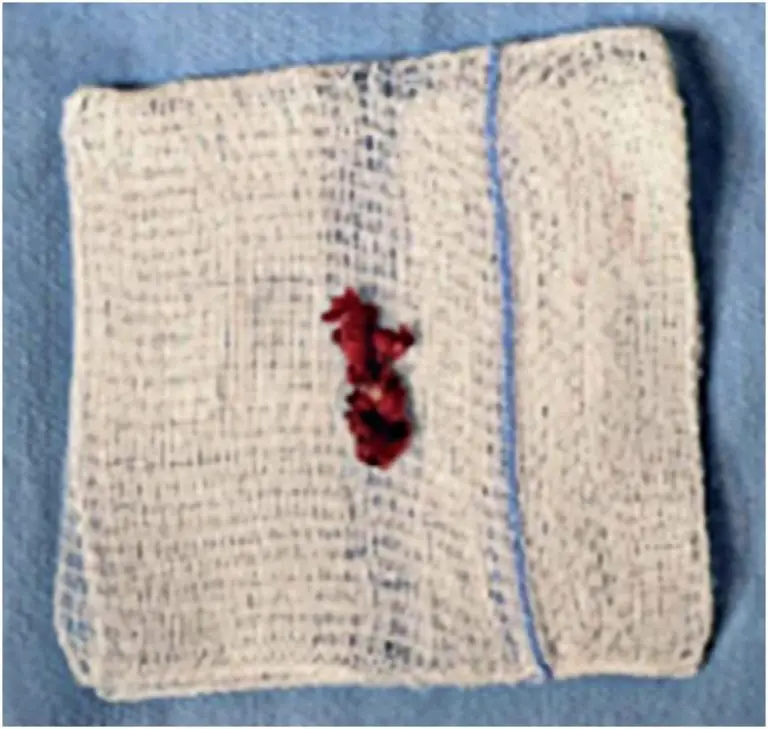13/Nov/2025
Hypopituitarism and Rathke’s cleft cyst in 48,XXYY Syndrome: new insights into sex chromosome aneuploidies
DOI: 10.31744/einstein_journal/2025RC1539
ABSTRACT The 48,XXYY syndrome is a rare sex chromosome aneuploidy associated with diverse physical, developmental, and endocrine abnormalities. This case report highlights a 15-year-old male with 48,XXYY syndrome presenting with hypopituitarism and a Rathke’s cleft cyst, offering insights into the interplay between genetic syndromes and pituitary dysfunction. The patient exhibited hyperprolactinemia, central hypothyroidism, central hypoadrenalism, and elevated gonadotropin levels. Brain magnetic resonance imaging revealed a cystic lesion within the sella turcica, consistent with a Rathke’s cleft cyst. The patient also […]
Keywords: Aneuploidy; Endocrine system diseases; Hypopituitarism; Klinefelter syndrome; Rathke's cleft cyst; Sex chromosomes
31/Oct/2025
Concomitant diagnosis of hypersensitivity pneumonitis and localized epithelioid mesothelioma: a rare case report
einstein (São Paulo). 31/Oct/2025;23:eRC1296.
View Article31/Oct/2025
Concomitant diagnosis of hypersensitivity pneumonitis and localized epithelioid mesothelioma: a rare case report
DOI: 10.31744/einstein_journal/2025RC1296
ABSTRACT Hypersensitivity pneumonitis is an inflammatory lung disease caused by antigen inhalation after sensitization. Here, we report a rare case of the simultaneous diagnosis of hypersensitivity pneumonitis and epithelioid mesothelioma, a subtype of malignant mesothelioma. A 71-year-old man presented with an occasional dry cough and exertional dyspnea that had persisted for about 1 year. He reported walking daily in a park with a considerable number of birds during same period. Functional evaluation revealed a mild restrictive ventilatory disorder. High-resolution computed […]
Keywords: Alveolitis, extrinsic allergic; Lung diseases; Mesothelioma; Rare diseases
31/Oct/2025
Atraumatic sacral fracture in a postpartum patient in the late postoperative period following lumbar decompression for disc herniation
einstein (São Paulo). 31/Oct/2025;23:eRC1630.
View Article31/Oct/2025
Atraumatic sacral fracture in a postpartum patient in the late postoperative period following lumbar decompression for disc herniation
DOI: 10.31744/einstein_journal/2025RC1630
ABSTRACT Stress fractures of the sacrum are extremely rare differential diagnoses for persistent low back pain in pregnant and postpartum women. The common occurrence of low back pain due to mechanical overload on the spine, coupled with challenges in obtaining imaging studies during this phase of a woman’s life, often delays and compromises the accurate diagnosis of sacral fatigue fractures. We report the rare case of a postpartum patient who underwent surgery for lumbar disc herniation one year and one […]
Keywords: Diagnosis, differential; Fracture, stresss; Low back pain; Lumbosacral region; Postoperative period; Postpartum period; Pregnancy; Sacrum
31/Oct/2025
Asymptomatic T prolymphocytic leukemia: case report and literature review
DOI: 10.31744/einstein_journal/2025RC1899
ABSTRACT T-cell prolymphocytic leukemia is a rare and aggressive mature T-cell malignancy that usually presents with marked lymphocytosis, hepatosplenomegaly, lymphadenopathy, and B symptoms. However, a minority of patients present with an indolent, asymptomatic form. Case Report: A 44-year-old man was diagnosed with asymptomatic T-cell prolymphocytic leukemia after routine blood tests revealed persistent lymphocytosis. Immunophenotyping revealed a mature CD4–/CD8+ T-cell population. Cytogenetic analysis showed 14q11.2 abnormalities with TCRAD rearrangement by fluorescent in situ hybridization. A monoclonal T-cell population was confirmed by […]
Keywords: Asymptomatic diseases; Leukemia, prolymphocytic, T-cell; T-lymphocytes
23/Oct/2025
Snakebites by Bothrops taeniatus: characteristics of snakebites involving a rare venomous snake in Brazil
DOI: 10.31744/einstein_journal/2025RC1430
ABSTRACT Snakebites from the genus Bothrops account for up to 90% of venomous snakebites in Brazil. Among these species, Bothrops taeniatus is considered rare in Brazil, with only one reported case in the literature. Its venom has a strong hemorrhagic effect but lacks procoagulant activity, which can lead to significant variations in the neutralizing efficacy of anti-Bothrops serum. We describe the first case of severe envenomation by B. taeniatus with rapid recovery following the administration of anti-Bothrops serum in Brazil, […]
Keywords: Antivenins; Bothrops taeniatus; Epidemiology; Snake bites; Snake venoms
23/Oct/2025
Complex diagnosis and management of metastatic esophagogastric junction adenocarcinoma with colonic and meningeal involvement
DOI: 10.31744/einstein_journal/2025RC1460
ABSTRACT This report presents a case of a 59-year-old male diagnosed with metastatic esophagogastric junction adenocarcinoma, who presented with mild dysphagia and vertigo. Brain magnetic resonance imaging initially showed no abnormalities. Upper gastrointestinal endoscopy revealed a vegetative lesion in the distal esophagus, and concurrent colonoscopy identified a laterally-spreading tumor in the transverse colon. Immunohistochemistry confirmed a poorly differentiated adenocarcinoma, suggesting an upper gastrointestinal origin. Further investigation of the worsening neurological symptoms led to the identification of leptomeningeal carcinomatosis via cerebrospinal […]
Keywords: Adenocarcinoma; Colon neoplasms; Colon, transverse; Disease progression; Esophageal neoplasms; Esophagogastric junction; Meningeal carcinomatosis; Neoplasm metastasis
23/Oct/2025
Nitazoxanide and nonsteroidal anti-inflammatory drugs (NSAIDs): unveiling the connection in immediate hypersensitivity cross-reactions
DOI: 10.31744/einstein_journal/2025RC1534
ABSTRACT Intestinal worm infections, referred to as helminthiases, represent a significant global health challenge, particularly in low- and middle-income countries. These infections affect millions of people and contribute to malnutrition, anemia, and impaired cognitive development, particularly in children. Nitazoxanide, first described in 1975, was initially developed as a veterinary anthelmintic. It has shown efficacy against various pathogens including Giardia lamblia, Entamoeba histolytica, and Cryptosporidium parvum. Recently, its use has expanded due to its observed in vitro activity against viruses, including […]
Keywords: Anaphylaxis; Anti-inflammatory agents, nonsteroidal; Aspirin; Cross reactions; Hypersensitivity; Nitazoxanide; Salicylamide; Salicylate
13/Oct/2025
Difficult clinical management of groove pancreatitis: a case report
DOI: 10.31744/einstein_journal/2025RC1216
ABSTRACT Groove pancreatitis is a rare form of chronic pancreatitis that affects the anatomical area between the head of the pancreas, medial wall of the second part of the duodenum, and common bile duct, known as the groove area. We present the case of a 40-year-old female patient with recurrent acute abdominal pain, vomiting, inappetence, and weight loss over several months. Diagnostic imaging revealed obliteration of fat in the pancreaticoduodenal groove and densification of the adjacent adipose planes, along with […]
Keywords: Abdominal pain; Pancreatitis, chronic
13/Oct/2025
HPV-independent vulvar squamous cell carcinoma: a case report and review of the literature
DOI: 10.31744/einstein_journal/2025RC1482
ABSTRACT Vulvar cancer, a rare gynecological malignancy, accounts for 3-5% of cases and is most commonly squamous cell carcinoma. Prognosis is poorer in cancers unrelated to human papillomavirus (HPV), often associated with chronic inflammation. We report the case of a 42-year-old woman from São Paulo, Brazil, who presented with a vulvar lesion initially misdiagnosed as an ingrown hair. Despite treatment, the lesion progressed, and subsequent evaluation revealed invasive squamous cell carcinoma. Biopsy confirmed HPV-independent disease, with immunohistochemistry demonstrating aberrant p53 […]
Keywords: Female genital neoplasms; Oncologic surgery; Papillomavirus infections; Squamous cell carcinoma; Vulvar neoplasms
13/Oct/2025
Perineural hematoma following lumbar injection presenting as a neurosurgical emergency
DOI: 10.31744/einstein_journal/2025RC1483
ABSTRACT Lower back pain and sciatica account for approximately 40% of work-related absences, with management options ranging from conservative measures, such as rest and analgesia, to surgical intervention. Lumbar epidural steroid injections and facet joint blocks are frequently used for both diagnostic and therapeutic purposes. While most complications are minor (2.4%-9.6%), severe events, including infection, hematoma formation, and spinal cord infarction, have been reported. This case presents a perineural hematoma manifesting as acute radiculopathy, necessitating urgent surgical decompression. The patient […]
Keywords: Descompression, surgical; Hematoma; Injections; Low back pain; Magnetic resonance imaging; Perineural; Radiculopathy; Sciatica



